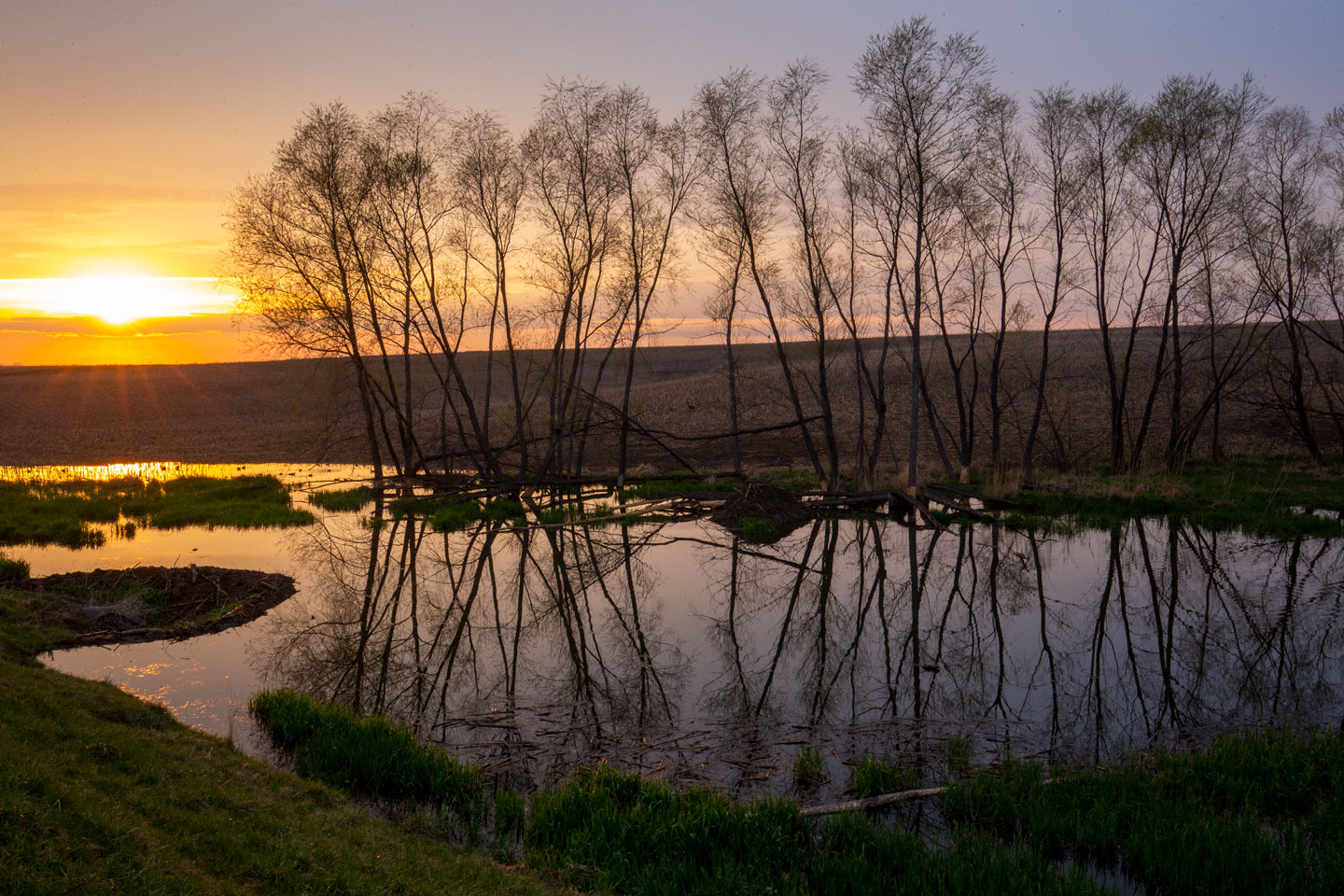Peregrine falcons
Peregrine falcons are birds of open spaces. They typically nest on sheer cliff faces, but they've also adapted to nesting on skyscrapers.

Known for their impressive speed, peregrine falcons are a medium-sized raptor found throughout the world. They are identified by their slate-grey mottled back and wings and cream-white belly and chest. They also have a characteristic slate-grey “mask” around their eyes and nearly black eyes. Like other raptor or birds of prey, their wings are long and tapered coming to a sharp point – designed for aerodynamic flying. Their impressive speed, however, does not come from flying but rather from diving with folded wings for prey.
Peregrine falcons feed on a wide variety of prey species but most often can be seen eating other birds. Prey includes pigeons, doves, waterfowl and songbirds of which they capture mid-flight. They will also eat small mammals including bats and rodents.
Historically their preferred habitat was open tundra and grassland with access to high cliffs on which they build a nest. More recently, they have successful habitat in urban areas – such as Omaha and Lincoln – where high buildings provide a nesting location and urban birds provide ample food.

Peregrines are important predators and like other raptors, are positioned at the top of the trophic pyramid. This means that they are often considered a “top predator” and have few other predators that would attack them. Being a top predator also means that you need a large ecosystem to support you. For example, peregrine falcons eat many kinds of other birds. They don’t need just one bird, though, they need many. The birds that peregrine falcons eat then need lots of insects, worms and seeds to eat. And, going one step down, the insects and worms need lots of plants and decaying material to ensure they have enough to eat. This all works when there is a healthy ecosystem and the animals at each level are healthy. In the United States, this was not always the case and caused peregrine falcon numbers to decline significantly.
DDT is a pesticide first developed in the 1940s to kill insects (most often mosquitos). It was used (with great success) to combat insect-borne diseases such as malaria, typhus and lice. It was also used to prevent insects in agriculture production, homes and gardens.
In the 1950s and 1960s the U.S. Department of Agriculture (who regulated pesticides before the formation of the Environmental Protection Agency in 1970) began to limit the use of DDT due to increased research showing the toxic nature of the chemical. It was not until 1972 when the newly formed EPA officially banned the use of DDT in the United States. Still today, DDT is used by other nations.
The impacts of DDT on wildlife were varied. For some species, the impacts were minimal. For other long-lived species that are higher on the food web (like peregrine falcons), the impacts were immense. Species greatly impacted by DDT include many birds such as bald eagles, peregrine falcons, California condor and brown pelican.
Contamination of DDT is an example of bioaccumulation. Bioaccumulation is the gradual build-up of a substance in a living organism. When DDT was sprayed, the insects impacted would likely have been eaten by a primary consumer such as a mouse, shrew, small bird or fish. As these species ate more and more of the insects, the DDT accumulated in their bodies. As secondary consumers (larger animals) ate these primary consumers, they would accumulate even more DDT. As the DDT worked its way up the food chain, more chemical was accumulated in the tertiary consumers bodies. This way, the species at the top of the food chain were more impacted by DDT than lower level species.
Adult individuals of many bird species were not drastically impacted by DDT, but rather their reproduction rate was greatly decreased due to DDT causing thinning of their eggs shells. When an adult bird would sit on the eggs for incubation, the eggs would break preventing successful reproduction. Over time, the overall population of the species would decline because naturally occurring deaths of individual adults were not offset by new young.
Prior to the 1940s, it is estimated that there were about 3,800 active peregrine falcon nests (7,600 individuals). By the mid-1970’s, there were only an estimated 324 nests (648 individuals). That is a decline of nearly 92% in total population in only 35 years. Peregrine Falcons were gone from the eastern United States and nearly gone from the western U.S. The Peregrine Falcon was listed as Endangered in 1970 under the Endangered Species Conservation Act of 1969 (the precursor to the Endangered Species Act of 1973).
Today, there is estimated to be over 70,000 Peregrine Falcons in the United State and Canada (approximately 35,000 pairs). The Peregrine Falcon was removed from the Endangered Species List in 1999 after considerable conservation work and reintroductions.
The conservation work undertaken by the U.S. Fish and Wildlife Service, the Peregrine Fund, the Canadian Wildlife Service and many other organizations and individuals was impressive. Over 6,000 peregrines were raised and released all over North America as part of reintroduction programs. Additionally, the ban on DDT was critical to ensuring wild birds were able to reproduce successfully.
Falcon cameras
Once threatened with extinction, peregrine falcons are now flourishing throughout the Midwest. Our two popular falcon cameras provide live streaming video from the 18th floor of the Nebraska State Capitol.
Peregrine education
The Nebraska Game and Parks Commission has partnered with the Omaha Public Power District to create a poster and three lesson plans focusing on Nebraska’s peregrine falcons. The poster details peregrine falcon natural history and the family tree of 93T, a well-known and long-live falcon that proved integral to the recovery program for peregrine falcons.





